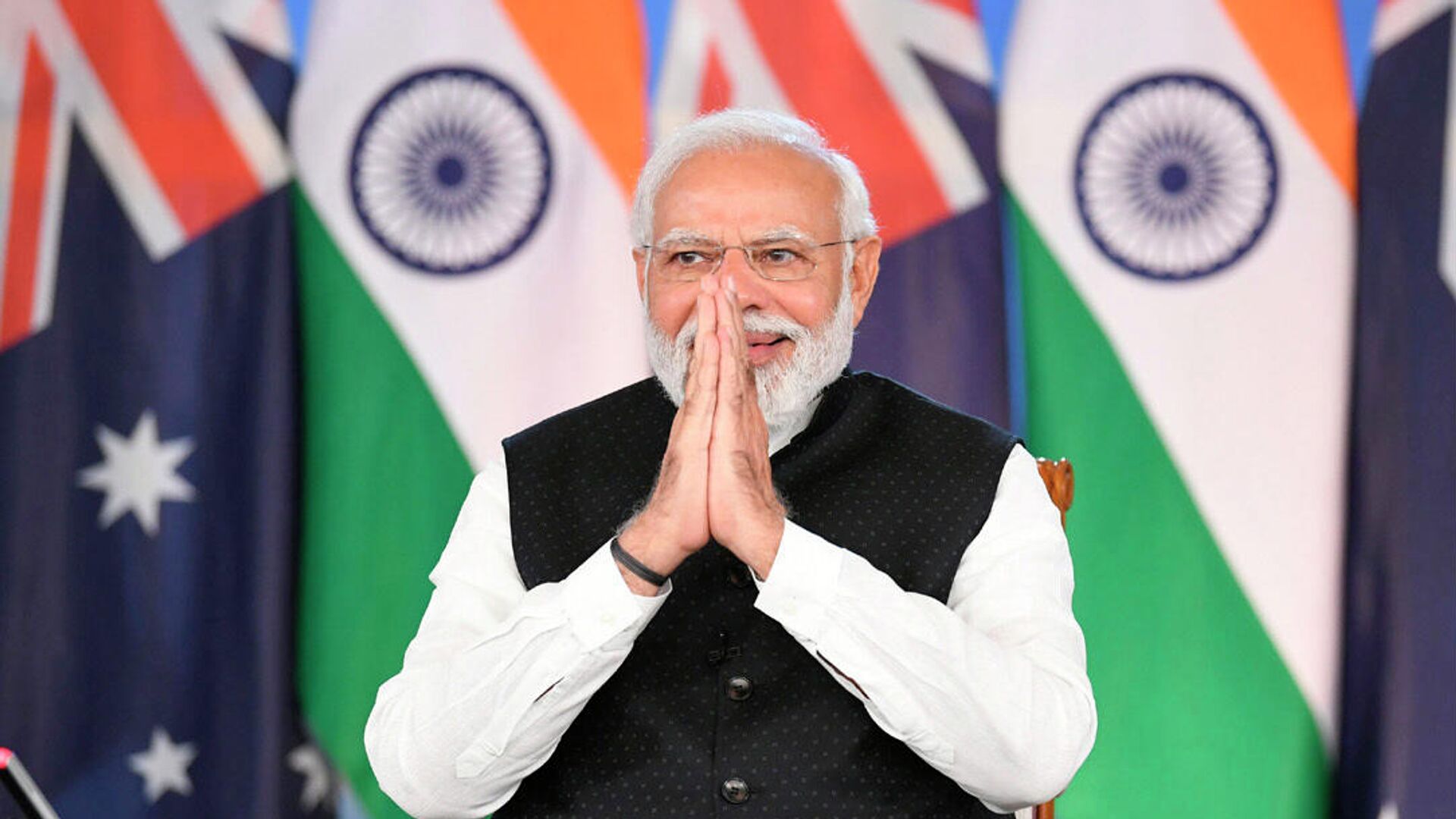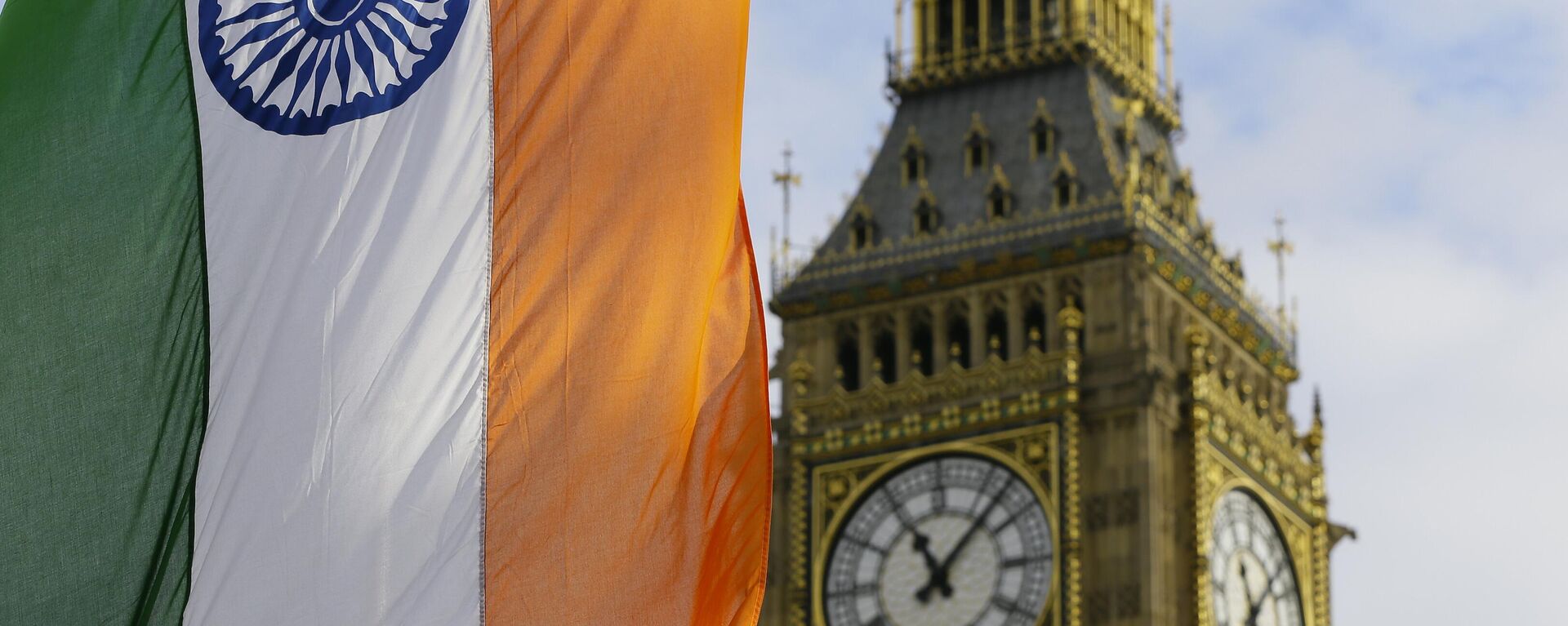https://sputniknews.in/20221229/india-australia-scrap-tariffs-on-bilateral-exports-as-fta-kicks-in-289001.html
India, Australia Scrap Tariffs On Bilateral Trade As FTA Kicks In
India, Australia Scrap Tariffs On Bilateral Trade As FTA Kicks In
Sputnik India
Canberra has eliminated tariffs on 85 percent of exports to India as the Australia-India Economic Cooperation and Trade Agreement (ECTA) kicked in on Thursday, per an official statement.
2022-12-29T13:38+0530
2022-12-29T13:38+0530
2022-12-29T15:46+0530
world news
australia
india
china
free trade agreement (fta)
duty free
indo-pacific
https://cdn1.img.sputniknews.in/img/07e6/0c/1d/293200_1112:44:2196:654_1920x0_80_0_0_9f493390d3be969917fa012f823f5d13.jpg
Canberra has eliminated tariffs on 85 percent of exports to India after the Australia-India Economic Cooperation and Trade Agreement (ECTA) kicked in on Thursday.Another tariff cut on Australian exports to India is scheduled to take place on 1 January 2023, the statement adds.Tariffs on another 5 percent of Australian exports, including macadamia nuts, avocados, berries, seafood, pharmaceuticals, cochlear implants, vitamins, infant formula, breakfast cereals, pasta, sandalwood chips, pumps and fillers, excavating machinery parts and lifting machinery for mines, have also been lowered, the statement says. These will be phased down to zero within the next six years.The DFAT said that the agreement would also provide “full or partial market access” for the Australian service suppliers in around 85 sectors and sub-sectors of the Indian economy.The statement noted that the pact would boost tourism and caters to workforce needs in regional parts of Australia by making 1,000 places available to Indian passport holders under the Working Holiday Visa category.Australia’s Minister for Trade and Tourism, Don Farrell, said that the trade deal with India reflected Canberra’s “commitment to diversifying exports,” and also unlocking the “enormous trade potential” between the two nations.Canberra and New Delhi have said that the ECTA will “almost double” trade between the two nations from $27.5Bln in 2021 to between $45Bln and $50Bln in the next five years.More than 95 percent of Indian Products to Get Duty-Free AccessMeanwhile, Australia is offering a "zero-duty" access to Indian exports in more than 6,000 sectors, including labor-intensive industries such as leather and textiles.New Delhi has said that 96.4 percent of Indian exports to Australia will get tariff-free access to the Australian market.The trade pact was ratified by the Australian Parliament in November. Earlier this month, Anupriya Patel, India's Minister of State (MoS) Commerce, confirmed in Parliament that the ECTA would kick in from 29 December.
https://sputniknews.in/20221213/india-uk-set-to-discuss-thorny-trade-issues-in-sixth-round-of-fta-talks-31501.html
australia
india
china
indo-pacific
Sputnik India
feedback.hindi@sputniknews.com
+74956456601
MIA „Rossiya Segodnya“
2022
Dhairya Maheshwari
https://cdn1.img.sputniknews.in/img/07e6/0c/13/138962_0:0:641:640_100x100_80_0_0_2cb44360dbcdf6d84bf4b299cd045917.jpg
Dhairya Maheshwari
https://cdn1.img.sputniknews.in/img/07e6/0c/13/138962_0:0:641:640_100x100_80_0_0_2cb44360dbcdf6d84bf4b299cd045917.jpg
News
en_IN
Sputnik India
feedback.hindi@sputniknews.com
+74956456601
MIA „Rossiya Segodnya“
Sputnik India
feedback.hindi@sputniknews.com
+74956456601
MIA „Rossiya Segodnya“
Dhairya Maheshwari
https://cdn1.img.sputniknews.in/img/07e6/0c/13/138962_0:0:641:640_100x100_80_0_0_2cb44360dbcdf6d84bf4b299cd045917.jpg
australia india fta, australia india free trade agreement, ecta india australia, indian exports data, india exports 2022
australia india fta, australia india free trade agreement, ecta india australia, indian exports data, india exports 2022
India, Australia Scrap Tariffs On Bilateral Trade As FTA Kicks In
13:38 29.12.2022 (Updated: 15:46 29.12.2022) India and Australia signed the free trade agreement in April this year to eliminate tariffs on each other’s exports and expand levels of business between the two countries.
Canberra has eliminated tariffs on 85 percent of exports to India after the Australia-India Economic Cooperation and Trade Agreement (ECTA) kicked in on Thursday.
A statement from Australia’s Department of Foreign Affairs and Trade (DFAT) said that duties on barley, oats, wool, lamb, fresh rock lobsters, cosmetics, metallic ores, critical minerals and non-ferrous metals was reduced to zero starting from today.
Another tariff cut on Australian exports to India is scheduled to take place on 1 January 2023, the statement adds.
Tariffs on another 5 percent of Australian exports, including macadamia nuts, avocados, berries, seafood, pharmaceuticals, cochlear implants, vitamins, infant formula, breakfast cereals, pasta, sandalwood chips, pumps and fillers, excavating machinery parts and lifting machinery for mines, have also been lowered, the statement says. These will be phased down to zero within the next six years.
The DFAT said that the agreement would also provide “full or partial market access” for the Australian service suppliers in around 85 sectors and sub-sectors of the Indian economy.
The statement noted that the pact would boost tourism and caters to workforce needs in regional parts of Australia by making 1,000 places available to Indian passport holders under the Working Holiday Visa category.
Australia’s Minister for Trade and Tourism, Don Farrell, said that the trade deal with India reflected Canberra’s “commitment to diversifying exports,” and also unlocking the “enormous trade potential” between the two nations.
Canberra previously said that “trade diversification” away from China, Australia’s largest trading partner, is a “central plank” of the government’s strategy. A Free Trade Agreement (FTA) between Australia and China, which was Canberra's first, came into force in 2015.
Canberra and New Delhi have said that the ECTA will “almost double” trade between the two nations from $27.5Bln in 2021 to between $45Bln and $50Bln in the next five years.
More than 95 percent of Indian Products to Get Duty-Free Access
Meanwhile, Australia is offering a "zero-duty" access to Indian exports in more than 6,000 sectors, including labor-intensive industries such as leather and textiles.
New Delhi has said that 96.4 percent of Indian exports to Australia will get tariff-free access to the Australian market.
The trade pact was ratified by the Australian Parliament in November.
Earlier this month, Anupriya Patel, India's Minister of State (MoS) Commerce, confirmed in Parliament that the ECTA would kick in from 29 December.



